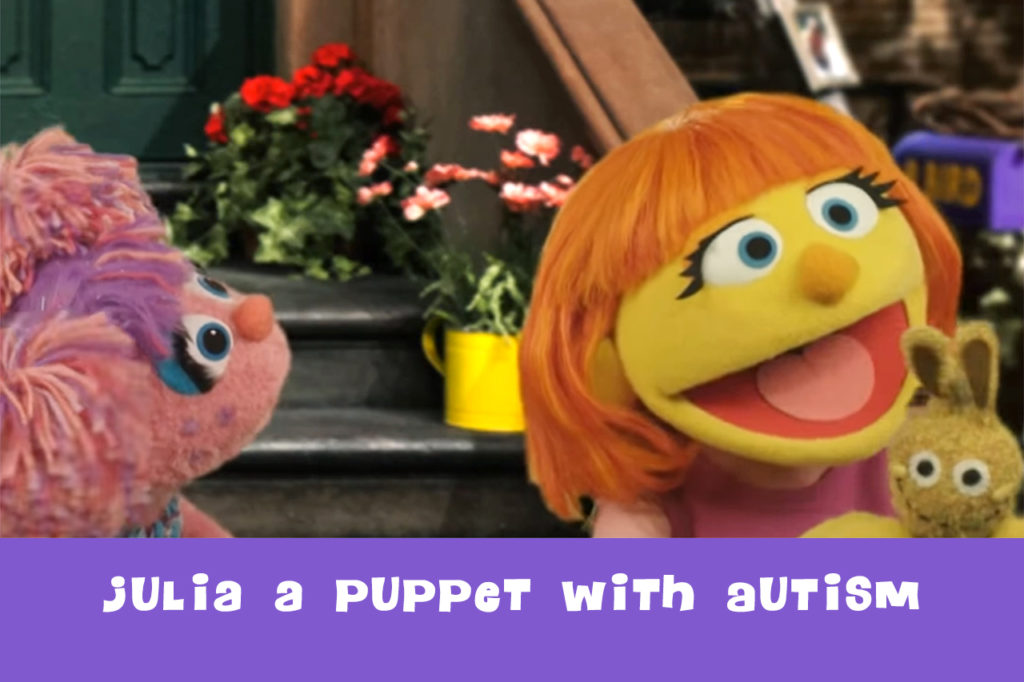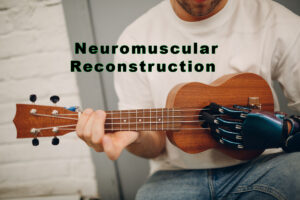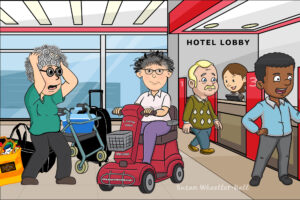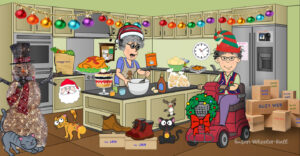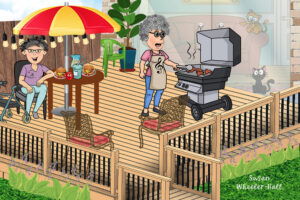Autism Puppet
The best way to teach young children is through play. Sesame Street has a long and glowing history of encouraging character development with children. Big Bird and the puppet gang make learning fun and meaningful. Sesame Street has been airing since 1969. Their newest addition is an autism puppet aimed to promote awareness.
One thing I admire about Sesame Street is how thoughtfully they introduce and integrate puppets who have various disabilities. They model warm and welcoming behaviour for children. Children are encouraged to be curious. It’s okay to ask questions. Answers to difficult inquiries are honest and always wrapped with the importance of respect. The spirit of friendship envelopes everything they do.
What’s not to love?
Meet Julia
Now comes along Julia, a new autism puppet character created to shed light on the experience of kids who live with Autism Spectrum Disorder. Autism is a disorder that is truly unique, meaning individuals differ. Determining how best to capture this within show scripts surely took some planning. According to the show writer, Christine Ferraro, the team decided to pick one thread and run with it simply because it would not be possible to unfold the wide range of autism.
In true Sesame Street style, puppets ask questions specific to lead the conversation toward points of education. In this instance, they are very careful to answer questions about autism within the parameters of “Julia’s experience”. This is a brilliant method to remind us all, that people, or in this case puppets, experience disability differently. Even better, the focus is directed to see the strength-based perspective of Julia and all children. Julia airs April 10th on PBS and HBO.
What is Autism?
Autism is a developmental disability that impacts social and communication behaviours. Things like making eye contact, behavioural outbursts, limited speaking and repetitive behaviours, are some of the possible symptoms. One of the biggest differences is having a limited ability to interpret the feelings or gestures of others. This deficit creates a sense of disconnection with others. It also makes it hard for kids to regulate their emotions. Losing control, for example, can be enhanced when in unfamiliar situations, and may at times lead to self-injuring actions.
The puppeteer who brings Julia to life, Stacey Gorden, has a son who has autism. As a professional, she is experienced working with children with disabilities. I can’t imagine a more qualified person to embody this sweet character.
Spirit of Acceptance
In the spirit of acceptance, all the puppets along Sesame Street help one another. In the script, for example, when Julia’s behaviour perplexes another puppet, Elmo, steps in to help explain and smooth things over. Knowing why someone, or in this case the autism puppet, does not look at you when you offer a hello, is important for children learning about social clues. If it’s not explained then it is easy to form ill feelings, or feel they themselves are disliked.
“It’s just Julia’s way” goes a long way to calm social waters.
Reducing the stigma of disability is what Sesame Street does best. They depict disability in the best possible light and encourage children to have open minds. It’s heart-warming but it’s also vital to help children learn about respecting differences. How Sesame Street goes about introducing such characters is truly amazing. This campaign, for example, required years of consultations with educators, families, and disability associations. A lot occurs behind the scenes of these shows and it sure pays off.
Bravo Sesame Street!
Learn more about Sesame Street and Autism here
Here is an interesting video created by the show 60 Minutes that speaks about developing the Julia character as well as gives you a glimpse of how the Sesame Street show is actually created.
Puppets are a great teaching tool for children as are diversity dolls. We wrote about them here.

